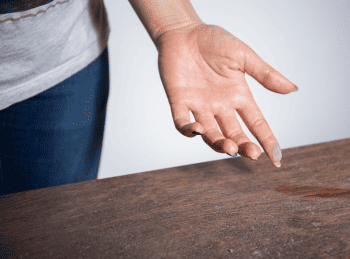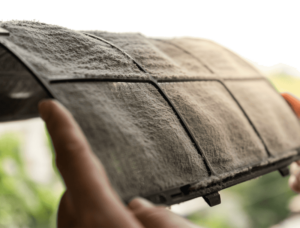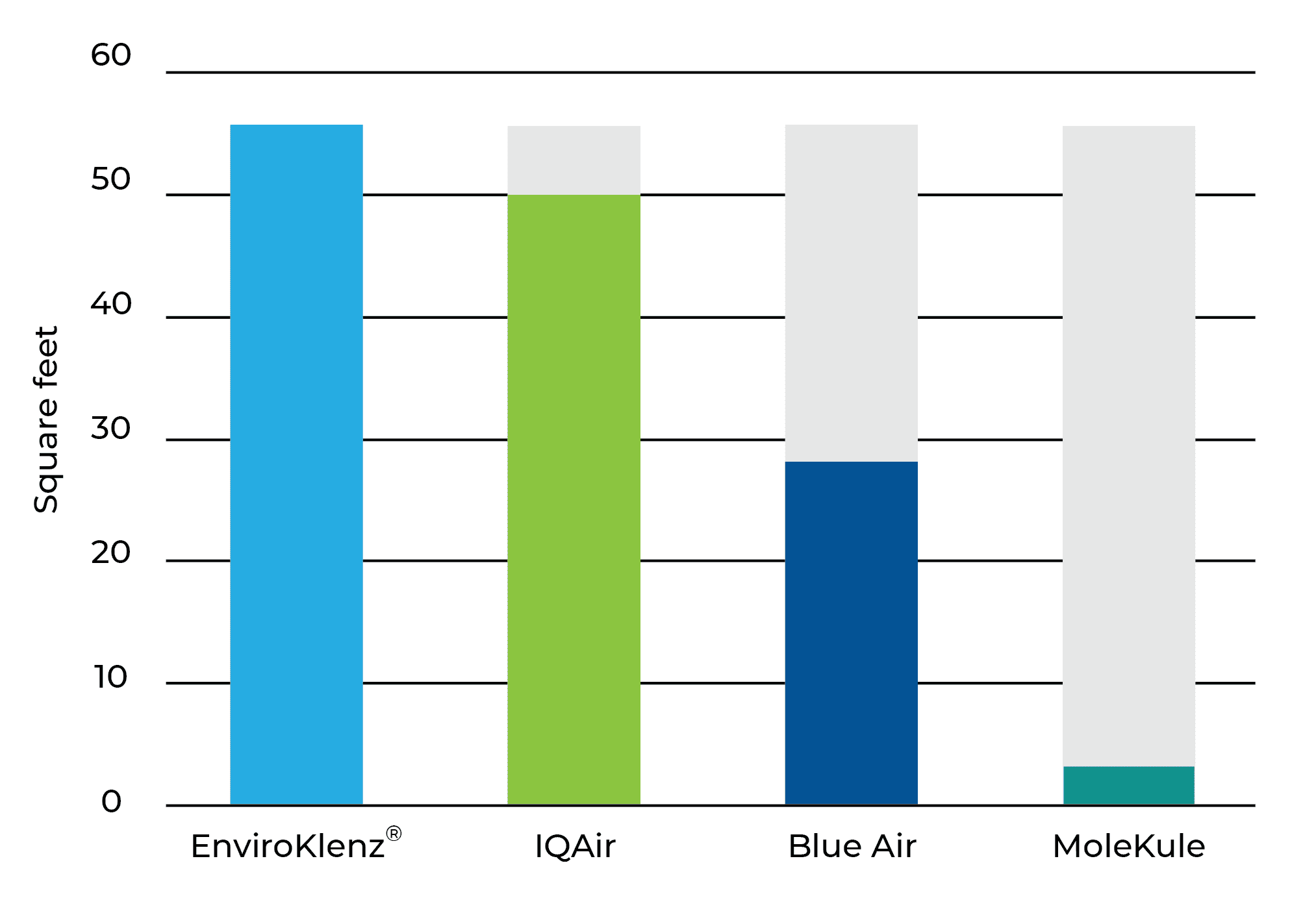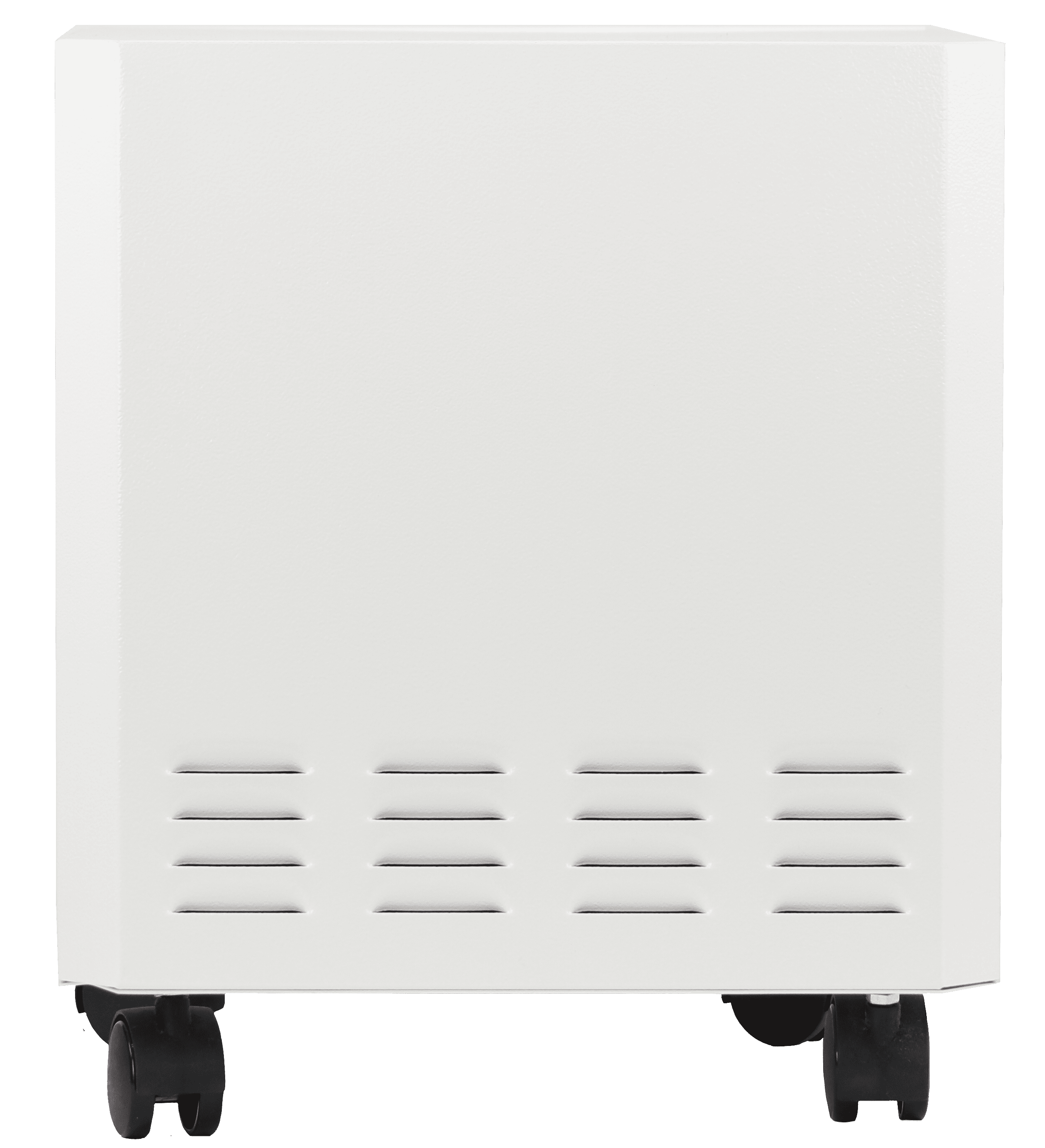Why Does My House Get So Dusty?
The dust is piling up, and you have finally hit your breaking point, the unexplainable answer plagues your mind, “why does my house get so dusty?”. You have recently gotten into the habit of cleaning almost each and every day, including dusting and vacuuming, which you had hoped would alleviate the growing dust issue brewing under your roof. However, to no prevail, the dust reemerges and steadfast on the shelving and floors of your home.
Dust can be an allergy-sufferers worst nightmare, and when it is present in high levels in your home, it can trigger a bout of allergy symptoms in those individuals. Along with the effects to allergy-sufferers, dust can also significantly taint the quality of your indoor air, and this can conversely affect the health of all occupants within the home.
In this article, we are going to discuss the causes behind excessive dust in a home and how you can adequately remove dust from the air of your home, for good.
Why Is There So Much Dust in My House?
 Did you know that the average house collects close to 40lbs of dust in one year? Sounds absurd, right? Well, it is when you think about the time it takes to clean this amount of dust present in your home. Most of the time, dust will sit in a home untouched, allowing it to buildup overtime inside of this indoor environment. As dust collects within a confined indoor space, it will promote the development of other environmental issues including indoor air quality, adverse health effects, and the creation of different allergens in the environment like dust mites.
Did you know that the average house collects close to 40lbs of dust in one year? Sounds absurd, right? Well, it is when you think about the time it takes to clean this amount of dust present in your home. Most of the time, dust will sit in a home untouched, allowing it to buildup overtime inside of this indoor environment. As dust collects within a confined indoor space, it will promote the development of other environmental issues including indoor air quality, adverse health effects, and the creation of different allergens in the environment like dust mites.
Dust is formed from an amalgam of debris/particles that are found within the home, and this mixture will buildup on the surfaces of this area. The miscellaneous debris and particles can be produced into the air from several things, including dead skin, hair, animal dander, fabric fibers, and other tiny particles found in the home. Therefore, depending on the different debris and particles located inside this space, and the levels they are present within this area, the amount of dust can either rise or fall drastically.
Where Does Dust Come From
When we think about where dust comes from, we may assume it comes from a lack of cleaning or even from pets and kids that are always in and out of the house depending on the hour. However, according to a study conducted by the American Chemical Society, it was concluded that most indoor dust comes from outdoors. They found that over 60 percent of house dust begins outdoors and is transferred into the home through the air brought into the airspace and from people who bring in these pollutants from outdoors through their clothing, shoes, purses that the dust will latch onto when outside.
Although outdoor contaminants are one of the significant influences on high dust levels in a home, there are additional sources that we must be aware of to help minimize dust levels in the future. Dust can collect in a home from clothing dryers, electronics, air conditioning units, pets, and even carpeting.
What is Dust Made Up Of
Household dust is composed of a broad mix of particulates found throughout the home – and although myth has it that dust is formed mostly of dead human skin found in the environment, this is only but a small fraction of what dust is made up of in your home. It may seem as though dust appears seemingly out of thin air, but the reality is that there are multiple sources of dust present within both indoor and outdoor environments.
Indoor sources of dust can come from pet dander, animal hair, paper fibers, human skin cells, food particles, human hair, and textile fibers.
Outdoor sources of dust are generated from outdoor particles such as soil particles, pollen, and insect follicles.
What Causes Dust Indoors
If you are experiencing excessive dust accumulation inside your home, there will more than likely be some underlining reasons for this increasing dust issue. Inside the home, there are multiple functions of the home, that if they are not correctly working, will contribute to an overabundance of dust on the surfaces and in the air of the environment.
The most common causes of excessive dust in a home is from the following:
 Frequently Change HVAC Filter: One of the essential components to dust buildup is an ineffective air filter that needs to be changed regularly (every month) in your HVAC system. Often, many households fail to properly change out their air filters, which allows for an excess of dust to build on the filter and will allow for the surfaces of the home to collect this overproduction of dust in the environment. When a filter is filled with accumulated pollutants, the dust that comes into contact with the filter will slip through the filter and shortly than be recirculated throughout the home.
Frequently Change HVAC Filter: One of the essential components to dust buildup is an ineffective air filter that needs to be changed regularly (every month) in your HVAC system. Often, many households fail to properly change out their air filters, which allows for an excess of dust to build on the filter and will allow for the surfaces of the home to collect this overproduction of dust in the environment. When a filter is filled with accumulated pollutants, the dust that comes into contact with the filter will slip through the filter and shortly than be recirculated throughout the home.- Leaky Ducts Increase Dust: If you are consistently up-to-date with changing out your air filters inside of your home, then the next area of concern to analyze would be your home’s ducts. When your air ducts are leaking it not only overworks your air handling system, but it also will skyrocket your electricity bill. The leaking ducts have the potential to release unfiltered, dusty air into the home, which will result in an evident increase in dust within the environment.
- Humidity Level: Did you know that humidity levels inside the house can significantly impact the levels of dust present in this space? When the interior of your home is super dry, it will increase the production of dust in the environment and leave you with an overabundance of dust. The best way to even out humidity levels in an indoor environment is through the use of a quality humidifier.
Can You See Dust Mites?
 When there are high levels of dust swirling inside of your indoor environment, it can also introduce other forms of allergens into the mix that either will taint the indoor air quality within this area or adversely impact the health of those who suffer from allergies. One of these allergens that can become an issue is dust mites, tiny microscopic allergens that can multiply rapidly in the indoor environment. Dust mites are allergens that feed on flakes of dead skin, dander, and other particles found in dust – and when these allergens are present in the environment, it will elicit a bout of allergy-symptoms in those who suffer from this condition.
When there are high levels of dust swirling inside of your indoor environment, it can also introduce other forms of allergens into the mix that either will taint the indoor air quality within this area or adversely impact the health of those who suffer from allergies. One of these allergens that can become an issue is dust mites, tiny microscopic allergens that can multiply rapidly in the indoor environment. Dust mites are allergens that feed on flakes of dead skin, dander, and other particles found in dust – and when these allergens are present in the environment, it will elicit a bout of allergy-symptoms in those who suffer from this condition.
Dust mites can be found in surfaces of your home where there is fabric or any soft surface like a mattress, bedding, upholstered furniture, carpeting, and even curtains where dust can quickly become trapped within the material for the mite to feast.
Dust Mite Size
You may wonder why you never see these little critters floating within your home, and the reason behind this is because they are so microscopic that the human eye can not detect these allergens. Did you know that a gram of dust contains nearly 1,000 dust mites and 250,000 allergenic dust mite fecal pellets within this concentration of dust? The overall size of these dust mites ranges from 0.2 to 0.3 millimeters in size – making them nearly impossible to see with the naked eye and requires the use of a microscopic to observe these allergens visually.
How to Remove Dust from Air
Are you finally reaching your breaking point with the excessive dust accumulating in your home? From the allergies that it has stirred in your body, along with the impact it has had on your air quality inside your home, the dust must be effectively eradicated from not only your home’s surfaces but more importantly from the air. Dust particles can become airborne throughout the indoor air space, and this pathway for dust is often not addressed and remediated in the home when removing dust.
There are several good practices about minimizing dust accumulations in an indoor environment including washing bedding once a week, keeping your closets and other small confined areas clean, reducing clutter and messes on flooring, and even opting for an alternative flooring material other than carpeting. However, when it comes to minimizing and removing dust from an indoor air space, the recommended solution to this increasing issue is through implementing an effective air purifier within the personal indoor environment.
An air purifier is a useful air filtration device that provides beneficial capabilities to those allergy and asthma sufferers in an indoor environment. These devices are designed to filter the indoor air through the purifier to reduce and eliminate pollutants and allergens, like dust from the air space of the environment. When selecting an air purifier for allergen removal, it is essential to research the particulate capacity of the air purifier to analyze its capability to capture and eliminate dust from the air. A HEPA air filter is among the most effective filtration technology when it comes to effectively trapping and removing ultra-fine particulate matter like dust, as these filters are capable of trapping particulate matter larger than 0.3 microns in size at a 99.97 percent efficiency rate.

Graph: Square Feet Available Particulate Filter Media
EnviroKlenz Air System uses a HEPA filter that has more square feet of media when compared to the ones used in the IQAir and the BlueAir. The MoleKule does not have a HEPA filter, so the square feet of the prefilter was used for this comparison. The prefilter, in addition to the having fewer square feet of media, is also significantly less efficient at removing particulates when compared to HEPA or better filters of the EnviroKlenz, IQAir and BlueAir systems.
The EnviroKlenz Mobile Air System will provide both the HEPA filtration capability for particulate matter, as well as the ability to effectively attack and break down VOCs and other chemical pollutants on a compound level using a patented earth mineral technology. Therefore, when selecting an air purifier for dust removal in the air, the EnviroKlenz Mobile Air System is a great option and one that you can rely on to continually work to minimize and eliminate those pesky dust particles from the air completely.

Mobile Air System

✓ Patented earth mineral technology works to attack VOCs and break them down on a compound level
✓ No chemicals or masking agents
✓ Will not release any chemicals back into your environment
✓ Safer and faster at removing VOC’s than traditional carbon filters and PECO air purifiers
Comments
Post a Comment